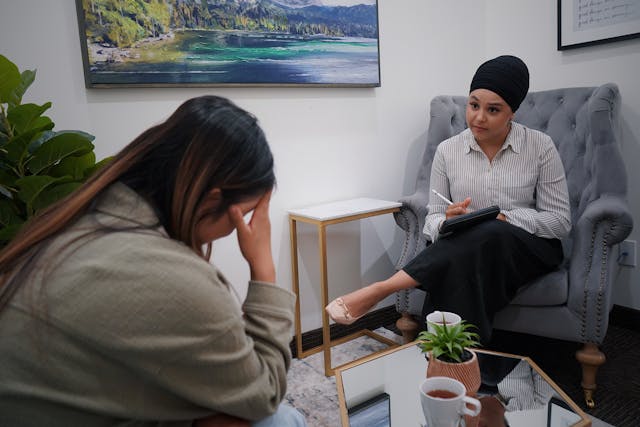What is TikTok, and why is it so popular?
TikTok is a short-form video platform that allows users to create, share, and engage with a wide range of content, from dance trends to educational clips. Its highly responsive algorithm tailors content to individual preferences, making it engaging and challenging to put down.
The app’s emphasis on viral challenges and trends fosters community and user participation. With accessible editing tools and a vast global audience, creators of all levels can gain widespread visibility. Whether for entertainment, self-expression, or social connection, TikTok has become a dominant force in digital culture.
Healthcare professionals are looking into how TikTok affects youth mental health and overall well-being, taking into account both the potential benefits and risks, such as the spread of mental health conditions, disorders, and concerns, such as attention deficit hyperactivity disorder, self-harm, eating disorders, and other mental health issues.
Why is TikTok addictive?
TikTok's addictive nature stems from its algorithmic design and compelling community features, which encourage ongoing involvement. Below are some reasons why it becomes addictive:
- Algorithmic personalization: Similar to other social media platforms and apps, TikTok curates content tailored to each user's preferences, which keeps TikTok users, especially young adults, continuously engaged.
- Bite-sized, dynamic videos: The platform's short videos cater to limited attention spans, a trend common in social media apps. They fuel persistent scrolling and contribute to public health concerns regarding youth mental health.
- Instant social validation: Quick feedback through likes and comments provides immediate gratification that reinforces usage, a mechanism also seen in discussions around mental health conditions and mental health disorders like self-harm and eating disorders.
- Community and virality: TikTok’s algorithm promotes content based on engagement, making it easy for users to feel connected to trends and online communities. The platform’s viral nature encourages users to participate in challenges, duets, and trends.
What mental health challenges can arise as a result of TikTok addiction?
Excessive TikTok use is becoming increasingly worrying as it can lead to potential mental health challenges such as:
Doomscrolling and the rabbit hole effect
Endless scrolling through short videos, often described as doomscrolling, can lead TikTok users down a rabbit hole of repetitive, similar content driven by TikTok's algorithm, exacerbating mental health concerns such as anxiety and depression while increasing overall screen time in the digital age.
Anxiety and depression
Excessive use of the TikTok platform can contribute to heightened symptoms of anxiety and depression in young adults and teens, with mental health information highlighting that continuous exposure to rapidly changing mental health content may negatively impact well-being and social media behavior (Bahnweg & Omar, 2023).
Eating disorders and body image concerns
The prevalence of idealized images and trends on social media apps like TikTok can contribute to distorted body image and eating disorders among young people, as the pressure to conform to specific aesthetics fuels mental health conditions and stresses related to mental disorders.
Social anxiety and reduced focus
The rapid pace of TikTok videos and the constant need for digital engagement can lead to social anxiety and diminished focus. Users, particularly younger ones, may struggle to balance online interactions with real-life social support, ultimately impacting overall mental health and the ability to concentrate in academic and social settings.
What can mental health professionals do to address TikTok addiction?
Mental health professionals can adopt multifaceted strategies to address the negative impacts of TikTok. Below are the examples:
Enhance digital literacy and mindful use programs
Mental health practitioners can design teaching programs focusing on digital literacy and responsible social media use, assisting users in understanding TikTok's algorithm and the consequences of excessive screen time. Clinicians can reduce the negative effects of prolonged app use in the digital age by teaching young adults and children how to critically content on TikTok and other social media platforms.
Conduct routine mental health assessments
Integrating questions about TikTok use and other social media behavior into routine mental health exams enables clinicians to detect harmful tendencies early. Evaluating screen time and the consumption of short videos can help identify underlying mental health conditions, allowing mental health professionals to tailor interventions for young adults and teenagers experiencing these issues.
Develop tailored therapeutic interventions
Clinicians are encouraged to design and implement therapeutic interventions specifically addressing the adverse effects of excessive TikTok use. Tailored treatment approaches, such as cognitive-behavioral therapy and mindfulness techniques, can help individuals manage symptoms of depression, anxiety, and other mental health disorders. These interventions are crucial for TikTok users who may be affected by potentially harmful content and the rabbit hole effect of incessant scrolling through similar TikTok videos.
Foster collaboration with schools, families, and TikTok creators
Building a supportive ecosystem for young people involves collaboration with educational institutions, families, and even TikTok creators. By engaging these stakeholders, mental health professionals can promote balanced social media use and disseminate accurate mental health information. This cooperative approach aims to counteract the negative impacts of TikTok use while fostering a community that supports overall well-being and mental health care.
Main takeaways
TikTok's algorithm-driven content and brief videos can encourage addictive behavior and exacerbate mental health disorders like depression and anxiety in young people. As a result, mental health providers are encouraged to incorporate digital literacy programs, evidence-based therapies, and collaborative community activities into mental health care strategies to reduce these risks while improving general well-being in the digital age.
Reference
Bahnweg, E., & Omar, H. (2023). Effects of TikTok on Adolescent Mental Health and Well-being. https://www.journalofhealth.co.nz/wp-content/uploads/2023/04/DHH_TikTok_Hatim.pdf




.jpg)
.jpg)

.jpg)
.jpg)


.jpg)


.jpg)

.jpg)


.jpg)





.jpg)

.jpg)